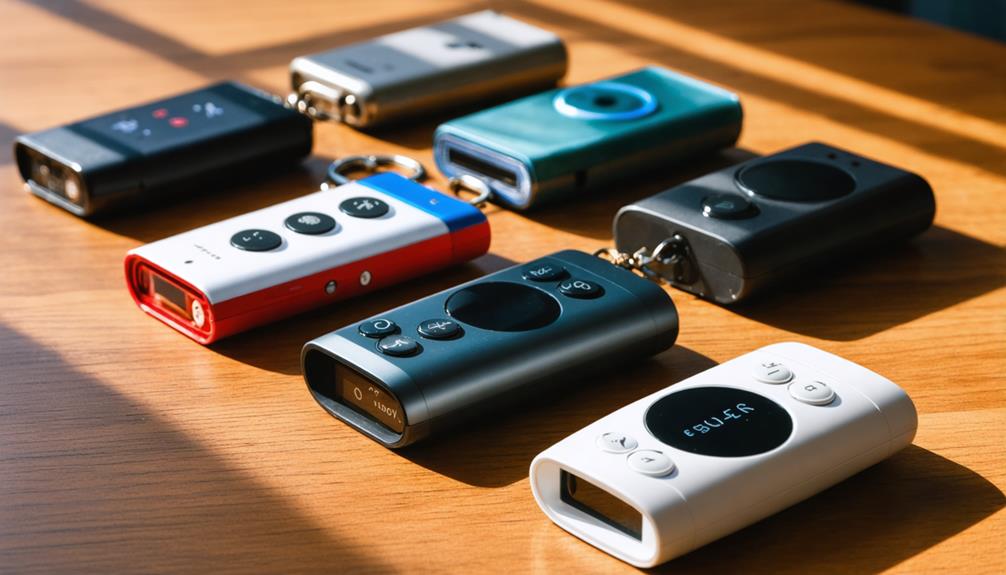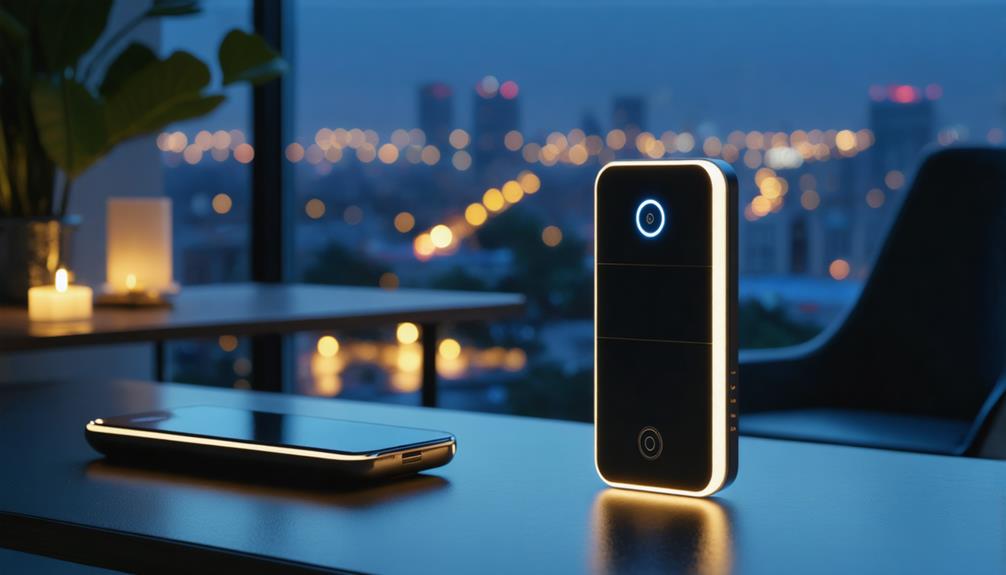
Brainstorm Security Shop

For Orders Over $199

On Any Of Our Products

Details On Refund Page
In an increasingly unpredictable world, personal alarms have emerged as crucial tools for bolstering individual safety and peace of mind. These compact devices, whether attached to a keychain or worn on the wrist, offer more than just a loud deterrent against potential threats. With advancements in technology, many personal alarms now integrate features like flashlight functions and smartphone connectivity, expanding their utility beyond mere noise-making. As we explore the various types and benefits of personal alarms, one must ask: what truly defines the effectiveness of these devices in ensuring personal security?
In the realm of personal security, understanding the types of personal alarms available is crucial for making informed choices. Personal alarms are vital self defense tools that can enhance one’s sense of safety and preparedness in emergency situations.
These devices are designed to emit loud sounds, alerting others to distress and potentially deterring an assailant. Their portability and ease of use make them accessible to individuals of all ages and abilities.
There are several types of personal alarms tailored to different situations. Keychain alarms are common, compact, and easily attachable to personal items like bags or keys. They are activated by a simple pull or press, making them convenient in moments of urgency.
Wristband alarms offer similar functionality with added accessibility, as they are worn on the wrist, ensuring immediate reach in emergencies.
Furthermore, wearable alarms integrated into jewelry or clothing are gaining popularity, providing discreet self defense tools without compromising style.
Meanwhile, smartphone-enabled alarms utilize apps to trigger alerts, send location data, and notify emergency contacts, enhancing emergency preparedness.
Understanding these variations allows individuals to choose a personal alarm that best aligns with their lifestyle and security needs.
When selecting a personal alarm, honing in on key features is essential to ensure it meets your security requirements effectively. One of the primary considerations should be the sound levels of the device. The effectiveness of a personal alarm largely hinges on its ability to emit a loud, attention-grabbing sound.
Ideally, the alarm should produce at least 120 decibels, a level comparable to a chainsaw, ensuring it can be heard over considerable distances and in noisy environments. This intensity is crucial in deterring potential threats and alerting others nearby to your distress.
Additionally, design considerations play a pivotal role in the selection process. A personal alarm should be compact and lightweight, making it easy to carry and access quickly in emergencies. Some designs offer added functionality, such as a built-in flashlight or keychain attachment, enhancing their utility.
The user interface should be intuitive, allowing for immediate activation without fumbling. Durability is another critical aspect; the device should withstand daily wear and tear, and ideally, be water-resistant to maintain functionality in adverse conditions.

Beyond the fundamental features, the real value of personal alarms lies in the array of benefits they offer. Chief among these is enhanced personal safety, providing users with a sense of security in potentially dangerous situations. These devices act as a deterrent to potential threats, as their loud sound can attract attention and discourage attackers. In terms of emergency preparedness, personal alarms are indispensable. They equip individuals with a proactive tool to alert others during distress, ensuring that help is summoned quickly.
Moreover, personal alarms contribute to broader societal safety. By encouraging the adoption of these devices, communities can foster a culture of vigilance and responsiveness. This collective preparedness translates into a safer environment for everyone.
| Benefit | Description | Impact |
|---|---|---|
| Personal Safety | Deterrent to threats and attackers | Increased individual safety |
| Emergency Preparedness | Quick alert system in distress situations | Faster response times |
| Community Safety | Encourages a culture of vigilance | Enhanced public safety |
| Accessibility | Easy for all ages to use | Broad user base |
| Peace of Mind | Provides reassurance and confidence | Improved quality of life |
Ultimately, personal alarms are more than just noise-makers; they are vital tools in safeguarding individuals and communities alike, ensuring that everyone is better prepared for emergencies.
A personal alarm can be a lifeline in critical situations, making its proper use of utmost importance. Understanding alarm activation techniques is crucial for ensuring that these devices function as intended during an emergency. Typically, most personal alarms are designed for quick and easy activation. This may involve pulling a pin, pressing a button, or flipping a switch.
Familiarizing oneself with the specific activation mechanism of the chosen alarm model is essential; practice this action multiple times to ensure swift response under stress.
Incorporating effective emergency response strategies alongside personal alarm usage can significantly enhance safety outcomes. Once the alarm is activated, it is vital to assess the situation quickly. This includes identifying potential escape routes or safe zones while alerting nearby individuals to the threat.
The alarm serves as both a deterrent and a call for assistance, so remaining composed and vigilant is key.
Furthermore, regular maintenance of the personal alarm, such as checking batteries and ensuring it is in working order, is part of a comprehensive emergency preparedness plan.

Selecting an appropriate personal alarm is a key step in ensuring effective personal safety, complementing the proper usage and maintenance discussed earlier. When choosing the right personal alarm, one must consider both alarm effectiveness and alarm portability.
Alarm effectiveness is primarily determined by the device’s sound decibel level, which should be loud enough to draw attention and deter threats. Typically, alarms with decibel levels of 120 dB or higher are recommended for maximum impact.
Alarm portability is another crucial factor. A personal alarm should be compact and lightweight, allowing for ease of carrying and quick access in emergencies. Devices that can be easily attached to keychains, belts, or bags are particularly desirable, ensuring they are always within reach.
Additionally, consider alarms with versatile designs that cater to specific needs, such as those equipped with LED lights for nighttime use or GPS features for location tracking.
Furthermore, battery life and ease of use are important considerations. Some alarms offer rechargeable batteries, which can be more convenient and sustainable than disposable ones.
Ultimately, selecting a personal alarm involves balancing these factors to best suit individual lifestyles and safety requirements.
In emergency situations, self-defense tools and emergency preparedness are critical. Personal alarms, as an integral aspect of these, provide immediate audio alerts, deterring potential threats and attracting assistance, thereby enhancing personal safety and response efficiency during crises.
Assessing suitability for child safety and elderly independence involves evaluating accessibility, ease of use, and effectiveness. Devices designed for these groups must address specific needs, ensuring reliable operation in emergencies to promote confidence and autonomy among users.
The use of devices internationally necessitates consideration of international regulations and cultural differences. Compliance with local laws and understanding cultural norms are essential to ensure effective and respectful utilization of technology across diverse global contexts.
Battery longevity varies depending on battery types, typically ranging from several months to a few years. Regular maintenance, including periodic testing and replacement, is essential to ensure optimal performance and reliability of the device’s power source.
The current question explores the availability of waterproof features and weather-resistant designs in certain devices. These attributes ensure functionality in adverse weather conditions, thereby enhancing durability and reliability for users in various environmental settings.
Personal alarms serve as vital safety devices by offering immediate access to emergency alerts and enhancing individual security. The variety of available forms, including keychain and wearable designs, ensures convenience and adaptability to different user needs. Key features such as loud sound emission, flashlights, and smartphone connectivity contribute to their effectiveness. By deterring threats and promoting a sense of preparedness, personal alarms significantly benefit users across various age groups, providing a crucial layer of protection in diverse situations.
